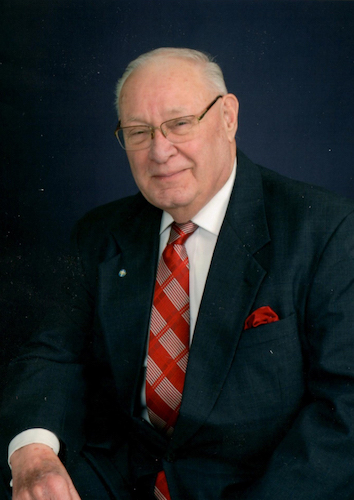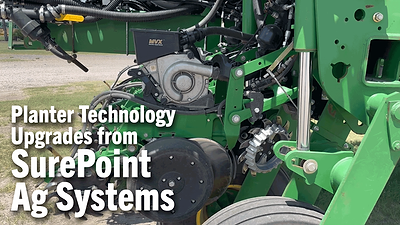1960 saw changes in farm tractors in styling, increased horsepower and operator comfort that were intended to entice farmers to purchase their next new tractor. Even with all of these modern improvements, those tractors remained essentially a frame with an engine and transmission covered with a sleek sheet metal exterior.
The family farm was beginning to disappear as the cost of producing a crop was increasing faster than the income those crops could produce and many smaller farmers were forced to find additional sources of income off the farm. By the 1970s the term “hobby farmer” came into vogue as a description for those who worked all week and farmed in the evenings and on weekends.
The average size farm in 1974 was 440 acres and the average size farm in 2017 was 441 acres. The total number of farms declined by about 290,000 farms from 1974 to 2017 and the total number of acres farmed declined by 116,000 during that same period, which indicated that much of the productive acreage in the 1970s is still in production today.
Fast forward to 2020 and tractors still resemble those on dealers’ lots in 1970, but their retail price has grown by nearly 10 times over the last 5 decades. Some of that increase is certainly due to inflation, but today’s tractors include technology that was unheard of in 1970. Global position systems (GPS) has given rise to self-driving tractors and combines and they are powered by engines that bristle with technology to make certain that they run efficiently and comply with the various environmental regulations of today. All of these advances in technology have increased the price of today’s tractors and combines much more than inflation has.
Computers that drive many of the tractors and combines function from a program that has been designed to duplicate previous actions and to track the GPS positions recorded on previous trips through the field. Equipment operators of today are simply monitoring the computer to make certain that it is functioning properly. These programs follow a previously determined path through the field, but do not have the abilities to adjust their track should an obstacle appear or a situation happen that is outside of its comfort zone.
Those outside of agriculture are amazed at the technology these units contain but are not even aware of the technology that directed the airliner that they just exited. Since an aircraft must function in three dimensions, the GPS system onboard not only determined it position on the earth but it also determined its altitude and speed over the earth. One will often hear the captain explain that “the computer says we will arrive at 11:57 a.m.” and not comprehend that he is simply monitoring the aircraft through the majority of the flight. The autopilot that is controlling the aircraft is often equipped with an “auto-land” ability, which means that the computer within the aircraft can actually direct its path through the air and land precisely on the spot the computer had preselected, provided that the arrival airport is equipped with the ability to support a Category III landing.
So, what does this have to do with future automation on the farm?
Within the next decade the technology that is currently in use in an agricultural application will appear to be very elementary and simplistic as coming tractors and combines will be controlled by computers that have the ability to learn from the operator rather than depend upon a fixed program. A truly intelligent tractor can not only follow a GPS track but can also see the terrain ahead and recognize if it is different from the last trip through that field and make the appropriate adjustments. The human operator could certainly recognize the problem but would most likely require 10-15 second to make a decision that would solve the problem, while the artificial intelligence within the computer could most likely make that decision in a single second.
We often refer this ability to learn to as “artificial intelligence,” but computer scientists recognize it as an “artificial neural network” (ANN). It is designed to function like the human brain, which contains millions of neurons and the learning process of a specific task requires the connection of a series of neurons. In an artificial neural network, each neuron is assigned a specific task and those neurons have the ability to record the actions of an experienced human operator while various neurons make connections as the computer “learns” the required actions.
Technology will not exhibit itself in the computers only but the rise of the electric powered tractor and combine is just beyond the horizon. The technology already exists to provide the drive for the units, but the battery pack required to provide that power for an entire day is still a distant promise. Electric powered automobiles now take pride in the fact that they can travel 300 miles on a single charge. At 70 mph average that equates to about 4 hours of operation and farmers are expecting their electrically powered equipment to work as long as their current fossil fueled machines. It is simply a matter of time before battery packs that will provide full power for 10-12 hours will be developed.
It is more than conceivable that future farmers will oversee a swarm of smaller operator-less electric powered tractor units operating in their fields and completing the planting and harvesting tasks in a much shorter period of time. There will be other robotic units that supply the seed and fertilizer to those units working in the field. These units will be equipped with technology that will tell them when their bins are empty and return them to the main source before returning to the next refill of the planting units working in the fields.
Harper Adams University in England has successfully harvested their second crop form their “Handsfree Hectacre.” This is an experiment in the use of equipment that is not controlled by human hands and their second year was more successful than their first. They reported the missed drilling of seed the first year was 2.82% and that fell to 0.35% the second year. These improvements resulted from those leading the project learning how to control the equipment in a more efficient manner. As artificial neural networks experiments continue it will be the machines that learn to correct their previous errors and improve their own production.
There are a number of experiments involving ANN and one of the leading efforts is taking place at University College, London. The researchers there have developed an artificial means of connecting neuron with a device known as a memristor. This devise has the ability to make the connection more than 1,000 times faster than conventional transistor-based AI hardware. Since these memristors are so much more efficient than the current AI transistors they have the ability to pack million more bytes of information into hand held devices that will not require a connection to the internet.
As this technology matures it will not only be used in the primary power units but will also become an integral part of many attachments to those units. Planters, which have already benefited from technology, will become precise placers of seed that will maximize the production from each acre. Specialty crops will see the development of machines that will plant, cultivate and harvest delicate fruits and vegetables while increasing the production per acre.
Livestock producers of the future will have units that continually patrol their pastures providing fertilizers at precise rates while measuring the moisture in the ground and using that information to automatically turn on irrigation systems that are controlled by computers that will dispense exactly the correct amount of moisture.
There is the concern that AI will displace human beings from their current employment and that is not a good thing for the general economy. Farmers have been experiencing a shortage of labor for some time now, and these units of the future will only make it possible to continue to produce agricultural products at a rate that will supply the needs of U.S. consumers.
Many futurist hold the view that population growth in the U.S. will require many productive acres of today be converted into residential properties to provide for the growing number of people. Many agricultural futurists envision farm lands disappearing, placing much additional pressure on those acres still in production. The fact of the matter is that more than 50% of present farms produce less than 10% of the total agricultural products. There are many acres today that are considered to be marginal in terms of being productive ground that will probably become housing for a future population. The dynamic growth that the population has seen in the past 60 years did little to reduce farm land and certainly has not slowed the gains in productivity of those acres and when historians in 2060 are looking back at the beginning of the century, they will most likely see a similar picture.






